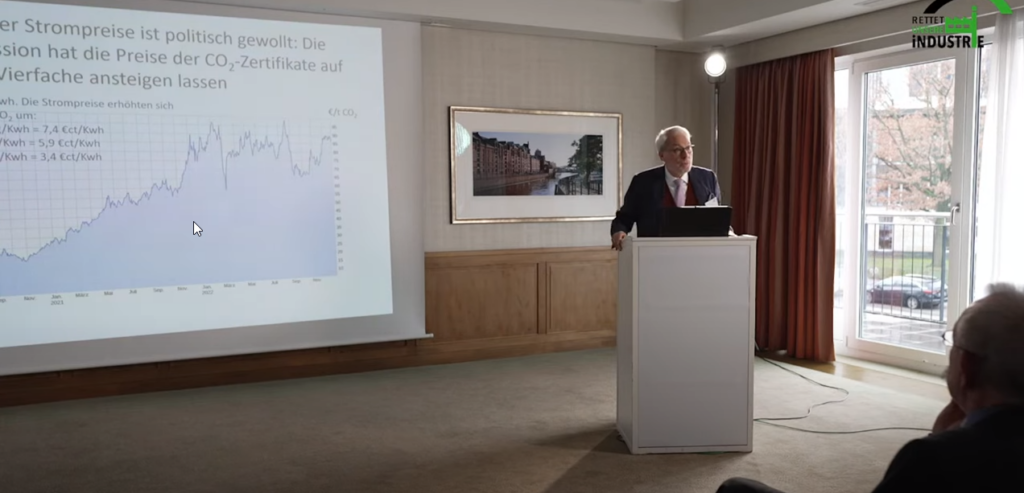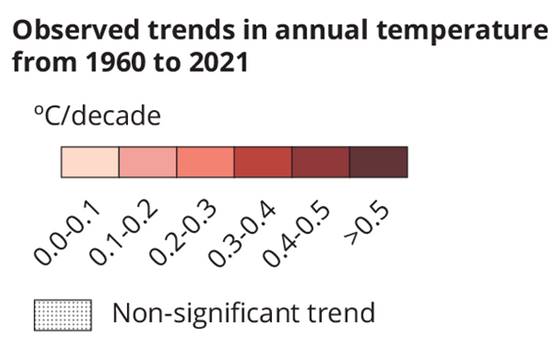Nach Angaben eines Artikels in der Zeit drohen den Deutschen zukünftig weitere Preiserhöhungen bei der Energie. Sie gehen von einer dauerhaften Verdoppelung der Preise aus.
“Deutschlands Stadtwerke erwarten eine dauerhafte Verdopplung der Gas- und Stromtarife für Endkunden. Angesichts gesunkener Großhandelspreise „wollen natürlich auch die Stadtwerke die Tarife senken und machen das, sobald Spielraum da ist“. Er warne aber vor falschen Hoffnungen, sagte Ingbert Liebing, Hauptgeschäftsführer des Verbandes der kommunalen Unternehmen (VKU), der Neuen Osnabrücker Zeitung. „Es wird nach unserer Einschätzung absehbar auf eine Verdoppelung der Gas- und Stromtarife hinauslaufen.“ Die Krise sei nicht mehr ganz so dramatisch, aber nicht vorüber. Einen Zeitraum für die erwartete Preisverdoppelung nannte Liebing nicht. Den Vorwurf von Verbraucherschützern, Stadtwerke verlangten inzwischen Mondpreise, wies Liebing zurück. „Die aktuellen Spotmarkt- und Terminpreise sind noch nicht so günstig, dass sich das bereits nachhaltig preissenkend auswirkt. Dafür müssten sie noch weiter und vor allem dauerhaft sinken“, sagte er.”
Bei solchen Meldungen schwingen immer mehrere Dinge mit. Auch Produzenten oder Dienstleister haben diese Preiserhöhungen folglich steigen auch andere Preise, nicht nur die Energiepreise. Da Löhne und Gehälter nicht im gleichen Maße steigen bedeuten diese Preiserhöhungen, dass entweder Ersparnisse aufgebraucht werden oder sich die Konsumenten bei anderen Dingen einschränken werden. In jedem Fall ist das eine schwere Bürde, die zu stemmen ist und sie wird erhebliche Auswirkungen haben.
+++
Das “2 Grad Ziel”, wer hat es erfunden? Roger Pielke Jr. erklärt in seinem Blog, dass es wohl weniger wissenschaftliche Erkenntnisse waren, sondern es sich eine politische Entscheidung handelte.
“In 2009, ahead of the year-ending Copenhagen climate conference, the U.N. Framework Convention on Climate Change (FCCC) was still calling for a climate target of 450 ppm carbon dioxide, which they equated to a global temperature rise of 2.0-2.4 degrees Celsius by 2100, and necessitating emissions cuts of 50% by 2050. But at the Copenhagen conference that December, which ended quite badly, small island states in particular emphasized the 350 ppm carbon dioxide target as a way to gain leverage in the negotiations.
The desire to keep a global coalition together in the face of dissention at Copenhagen helped to give the 1.5 C target a political foothold in order to keep many countries engaged in the negotiations. As one summary of the Copenhagen conference explained:
“Many countries supported a goal of keeping temperature increase below 2˚C above pre-industrial levels, with AOSIS [Alliance of Small Island States] underlining 1.5˚C and Bolivia 1˚C.”
Acknowledging 1.5C was not about science, but realpolitik.
Because climate policy target setting was shifting from carbon dioxide concentrations targets to global temperatures, to keep pace, the discourse needed to change as well. So 450 ppm became recast as 2 degrees Celsius and 350 ppm became 1.5 degrees Celsius, even though 350 ppm had never really been studied and the previous IPCC assessment associated 450ppm with temperature outcomes of 1.4C to 3.1C.”
+++
Auch in Schweden gibt es Überlegungen an bereits bestehenden Kernenergiestandorten neue Anlagen zu errichten. Svt.se berichtet. Der Artikel ist in Schwedisch, daher bitte die Übersetzungsfunktion des Browsers nutzen.
++++
Rettet die Industrie, unter diesem Motto fand am 19.01.2023 in Hamburg eine Konferenz im Hamburg statt. Einer der Referenten war Fritz Vahrenholt. Sein 30-minütiger Vortrag ist jetzt bei YouTube zu sehen. Er skizziert die Situation bei der Energiewende und das Ergebnis ist wenig schmeichelhaft.

(Abbildung: Screenshot YouTube)
+++
Nach Jahren mit zu wenig Niederschlag hat Kalifornien endlich wieder nennenswerte Mengen. Dennoch ist die Dürre damit nicht vorbei, jedenfalls, wenn man die Medien verfolgt. Ein Artikel bei WUWT thematisiert die widersprüchlichen Meldungen dazu.
+++
Das finnische Kernkraftwerk Olkiluoto 3 wird ab März in die volle Produktion von Strom gehen. Das berichtet der Betreiber in einer Pressemitteilung. Wegen Problemen mit bestimmten Pumpen gab es eine Verzögerung.
Almost all significant tests of the test production phase were completed at the end of December and in January, prior to starting the production break. The plant unit worked well and according to plan in the tests. The latest of the significant tests, the so-called Fault Ride Through (FRT), was interrupted by transmission system operator Fingrid. After the installation of the new impellers, electricity production is continued with a demo phase, during which the plant unit produces electricity to the grid at mainly full power. Regular electricity production starts in March 2023.
+++
Bulgarien plant seine Kohlekraftwerke länger als geplant zu betreiben. Das berichtet Euronews.com.
Bulgaria, a leading electricity exporter in southeastern Europe, has used the profits from its mainly state-owned energy producers to shield businesses and consumers from surging power costs. Outside the parliament building, demonstrators urged lawmakers to protect the mines and power plants at the Maritsa East lignite coal complex in southern Bulgaria, which provide jobs to over 10,000 people.
+++
Wie steht es um die Ozonschicht der Erde? Die NZZ hat sich das Thema Ozon angesehen.
“Über der Arktis werden allerdings weitere fünf Jahre vergehen, bis der Wert auch dort wieder normal ausfällt. Noch einmal deutlich länger braucht die Atmosphäre über der Antarktis. Dort entsteht fast jedes Jahr im Südfrühling ein riesiges Loch in der Ozonschicht. Dem Bericht gemäss wird es bis zum Jahr 2066 dauern, bis wieder der Stand von 1980 erreicht ist. «Über die Zahlenwerte kann man spekulieren. Doch im Grossen und Ganzen darf man sagen, dass wir auf einem guten Weg sind», sagt auch Martin Dameris vom Deutschen Zentrum für Luft- und Raumfahrt (DLR).
Tatsächlich erreichte die Konzentration von FCKW bereits um das Jahr 2000 einen Maximalwert. Seither nimmt sie beständig ab, jedoch äusserst langsam. Bereits vor vier Jahren hatte es Anzeichen für eine Besserung der Lage gegeben. Allerdings waren diese weniger deutlich und galten als eher vorläufig. Die Zahlen, die auf eine Erholung der Ozonschicht hinweisen, «haben sich sehr verfestigt», erklärte Newman jetzt.”
+++
Größere Windräder verschleißen schneller. Zu diesem Ergebnis kommt ein Artikel bei Netzerowatch.
“It is often said that larger wind turbines will perform better than smaller ones, thus bringing electricity at lower cost. It is undoubtedly true that larger turbines produce a higher percentage of their nameplate capacity (the capacity factor), because wind speeds are higher further from the ground. However, the effect is relatively small, as the figure below, taken from my 2021 paper on the cost of offshore wind suggests. The yellow dots are the actual figures for UK windfarms in their first few years of operation, so larger turbines appear to be delivering better capacity factors than smaller ones, although in fact some of the improvement will be due to the fact that larger wind turbines are being installed further from shore as well. The other data points are capacity factors predicted by various other commentators, in each case with a high figure, representing the early years’ performance, and a lower one, representing the lifetime average. (The ludicrous nature of BEIS’s figures is obvious, but that’s another story).”
+++
Leserpost von Dr.-Ing. Bernd Fleischmann:
Sehr geehrtes Klimanachrichten-Team,
wie in einem früheren Leserbrief bereits gezeigt, ist die Erwärmung in den Tropen geringer als in den nördlichen Breiten. Aber auch in unseren Breitengraden gibt es große Unterschiede, wie ein Bericht der European Environment Agency vom Juni 2022 zeigt. Eine Auswertung von Temperaturmessungen der Jahre 1960 bis 2021 ergab, dass es Regionen in Europa gibt, die in den letzten 62 Jahren keinerlei Erwärmung zeigen, z. B. in Teilen von Irland, Norwegen, Portugal, Rumänien, Bulgarien, Griechenland, Nord- und Mittelitalien. Hier die Grafik dazu von EEEA:

Die gepunkteten Regionen sind die ohne erkennbare Erwärmung:

Die stärkste Erwärmung gab es in Süditalien und in den französischen Seealpen, also direkt neben Gebieten ohne Erwärmung. Eine Erklärung für die starken Unterschiede in den Erwärmungstrends liefert die EEA nicht. Im Gegenteil, die Projektion für das Jahr 2100 mit dem CO2-Szenario SSP1-2.6 zeigt keine Unterschiede in der Erwärmung für die westeuropäischen Regionen:

Weshalb sollte man Projektionen für die nächsten 77 Jahre trauen, wenn die Erwärmung der letzten 62 Jahre offensichtlich von ganz anderen Faktoren dominiert war?
Beste Grüße,
Dr.-Ing. Bernd Fleischmann
+++
Methane emissions from reservoirs are increasing
Over time the water collected behind dams will release greater amounts of methane, a greenhouse gas with even worse effects than carbon dioxide, according to a recent study.
While previous research established reservoirs as significant sources of greenhouse gases including methane, this study, published in Nature Geoscience, is the first global-scale analysis of trends in those emissions. Researchers analyzed data and projections from 9,000 reservoirs on five continents to assess their climate impact from 1900 to 2060. They found that while carbon dioxide emissions are declining, methane emissions have increased and without any mitigation measures, will likely continue to rise.
„On a per mass basis, methane has a much stronger impact on climate than carbon dioxide does,“ said John Harrison, professor in WSU’s School of the Environment in Vancouver and a co-author on the study. „The balance of greenhouse gases emitted from those systems is shifting from carbon dioxide to methane. That means that although the total amount of carbon-based gas is decreasing, the reservoirs‘ net climate impact is increasing.“
While methane stays in the atmosphere for a shorter time than carbon dioxide, it holds on to infrared radiation more effectively. Over a 100-year timescale, methane is roughly 34 times more effective as carbon dioxide in warming the atmosphere, Harrison said.
The study showed that total greenhouse gas emissions generated by the reservoirs reached a peak in 1987 in connection with the period of construction of the large dams. Those emissions though were dominated by carbon dioxide, and despite that overall decline, the rise of methane poses a big problem.
The construction and operation of hydroelectric dams require the creation of reservoirs by flooding the area upstream, which causes the greenhouse gas formation, said co-author Yves Prairie, a professor at University of Quebec at Montreal.
„The flooding of organic matter leads to their decomposition very quickly,“ Prairie said. „This is why we observe a large release of carbon dioxide during the first 20 years after the construction of a dam.“
Both methane and carbon dioxide are produced by the decomposition of organic matter in the reservoir water, but methane is also produced by bacteria that accumulate over years in the reservoirs‘ ecosystem—and thrive in oxygen-less deep water and sediments. So methane continues to be produced by reservoirs long after they are built.
Globally reservoirs represented around 6% of total human-caused methane emissions in the 2000s and is expected to grow to up to 8%.
The good news is that there is at least one way to decrease these emissions, the researchers said. Methane is often concentrated in deep water, and one of the major ways it is emitted is through degassing, when water is pulled from the reservoir depths and passed through turbines or a spillway. The turbulence and flow into the river below allow that supersaturated methane to come in contact with the atmosphere where it can be emitted very rapidly.
However, managers can change the depth of water withdrawal from reservoirs and potentially reduce those emissions. A study at a Malaysian dam found that varying the withdrawal could reduce that emission pathway by as much as 90%.
More research is needed to understand the pathways for methane’s release from reservoirs, and Harrison is leading a project that focuses on the interactions between water management and the ecosystem properties in reservoirs. A WSU research team is also looking specifically at these interactions in Pacific Northwest reservoirs over the next four years.
„Anything we can do to reduce emissions of methane from any sector will help, and there’s an opportunity to manage reservoirs better to help meet that larger goal of reducing greenhouse gases,“ Harrison said.
Paper: Cynthia Soued et al, Reservoir CO2 and CH4 emissions and their climate impact over the period 1900–2060, Nature Geoscience (2022). DOI: 10.1038/s41561-022-01004-2
